In the north of Sardinia, in the municipality of Trinità d'Agultu e Vignola, there is a particular coastal area for its red granite cliffs known as the Costa Rossa (Red Coast). It is an area of Gallura that is still wild and little explored compared to more famous destinations. It offers breathtaking views, where nature is the master and where the peninsula of Isola Rossa suddenly plunges into the sea.
We will discover the Costa Rossa most beautiful beaches, a fishing village that has become a tourist destination, the traditions, festivals and flavours, the history and legends of a place incredibly generous in its colours' intensity and the fantasy of its shapes. It will be one of those experiences that will immerse you in a beauty impossible to forget.

We are the uninterrupted reign of the mastic tree, of the waves rushing over the ancient granites, of the dog rose, of the wind, of the immensity of the sea. We are an ancient land of long silences, of wide and pure horizons, of bleak plants, of mountains burnt by the sun and by revenge. We are Sardinian.
The Costa Rossa: wild beauty amidst the Mediterranean maquis and the sea
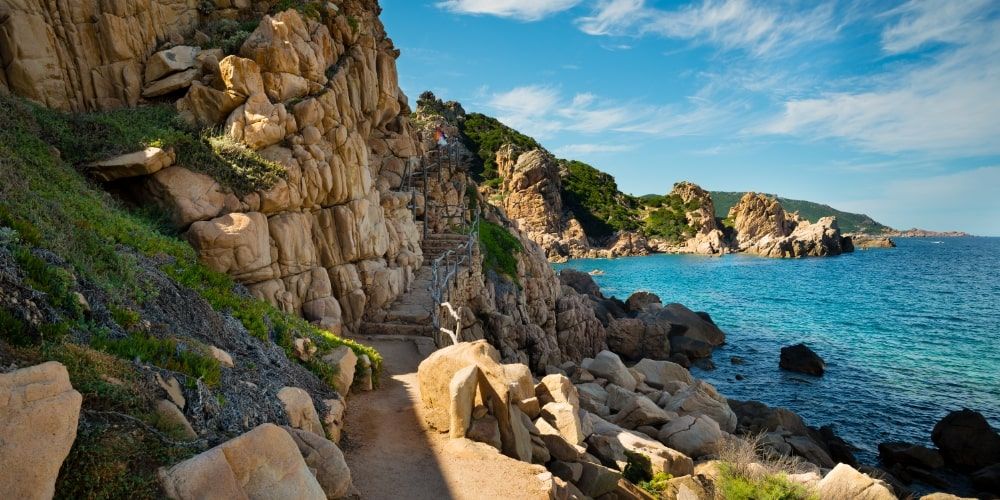
They say it is only an ancient island rising in the middle of the sea surrounding Italy. And yet, Paradise must be more or less like this, were it not for the sun, which beats down mercilessly during the hottest hours of the summer months, and for the Mistral that some days, in this part of northern Sardinia, makes itself felt with all its force. The wild beauty that can be discovered as we travel along the winding coast road up a steep slope to Costa Rossa (Red Coast) is incredible, amidst the scents of the Mediterranean maquis and a landscape that is never the same, where silence reigns. Suddenly, looking towards the horizon, a deep red cliff appears, with an emerald sea at its foot.
This is what is so special about Sardinia: that it offers those who wish to visit ever-changing panoramas. In the stretch between Santa Teresa di Gallura and Badesi, the Mistral wind over the centuries seems to have had fun letting loose all its imagination and, unleashing the force of the waves, has created a landscape made up of strangely shaped rocks and coves with sand in various shades ranging from pink to white and abandoning themselves to a sea of different hues, from green to turquoise to the deepest blue.
The Costa Paradiso
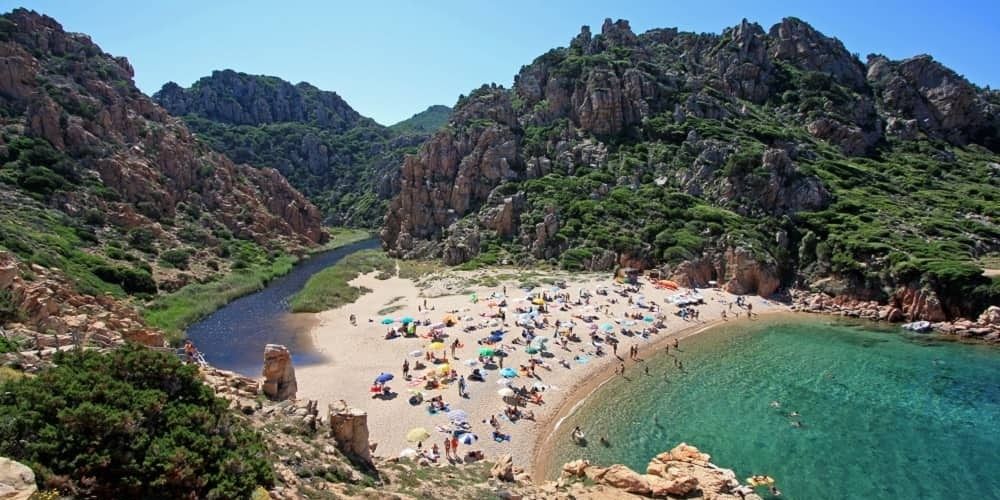
One of the most fascinating stretches of coastline is the Costa Paradiso (Paradise Coast), with its succession of particularly jagged inlets, plays of colour and natural pools, a real paradise for snorkeling and scuba diving enthusiasts. Li Cossi beach can be reached via a path or by sea, enclosed by pink cliffs on either side and a small pond behind. Also worth mentioning is Li Tinnari beach, which can only be reached on foot and is the symbol of Costa Paradiso, unusual for its double arch shape, and the small natural inlets of Le sorgenti, Li Tamerici and Le Baiette. A little further on, Cala Sarraina with its fine pink sand and Cala Faa characterised by a small beach with a slightly coarse pink sand.
The village of Isola Rossa
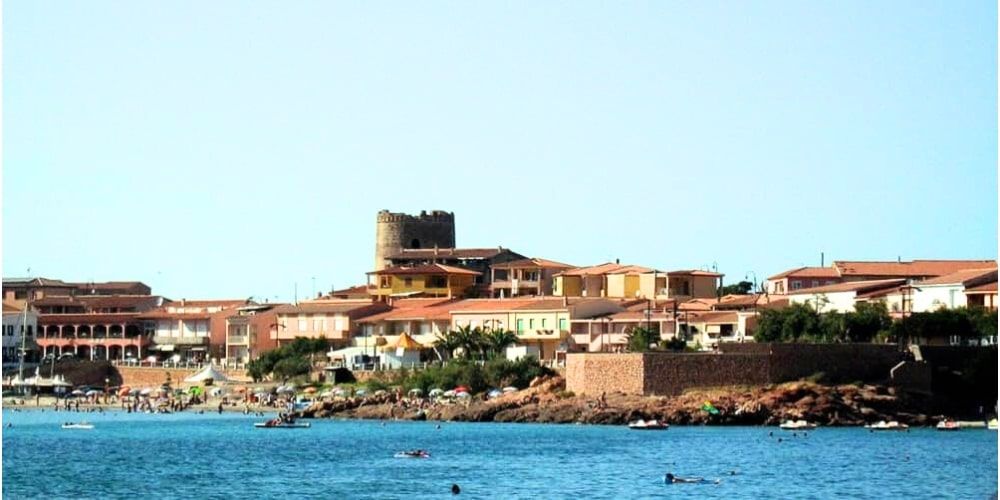
Halfway between Costa Paradiso and Castelsardo, on the promontory of the same name stands the small fishing village of Isola Rossa (Red Island), right in front of a red islet that emerges from the sea and takes on the colour of fire at sunset. Since the end of the 16th century, the great coastal tower has been scanning the horizon to defend the territory from pirate and Saracen incursions that were once a great scourge of Sardinia. Meanwhile, life in the village glides serenely along the seafront, among the stalls, restaurants, craft shops and the bustle of tourists. This is the perfect destination for those seeking contact with nature and relaxation, as well as for excursion lovers who will not be disappointed. There are numerous boat trips from here, surfing and windsurfing on the waves created by the Mistral, trekking and horse riding among the thousands of colours and scents of the Mediterranean maquis, diving and snorkeling to admire the world that lives under the sea, populated by many fish and red corals, and for the fun of children there is the Acquafantasy water park.
Among the marvellous coves and beaches in the area, two should certainly be mentioned, equipped with sunbeds and umbrellas: Spiaggia Longa, the most important beach in the locality, and the small beach of Li Femini, ideal for families with small children. Five minutes away by road is the bay of La Marinedda, which, on days when the Mistral blows, becomes a surfer's paradise, and nearby Cala Rossa, hidden among the rocks, wild, with a pine forest behind it and various boulders emerging from the water. Part of a now completely different landscape, Li Feruli beach is seven kilometres long and Li Junchi beach is over eight kilometres long, famous for its light-coloured sand and for being the ideal place for wave lovers, in the territory of nearby Badesi.
Where to sleep in Isola Rossa
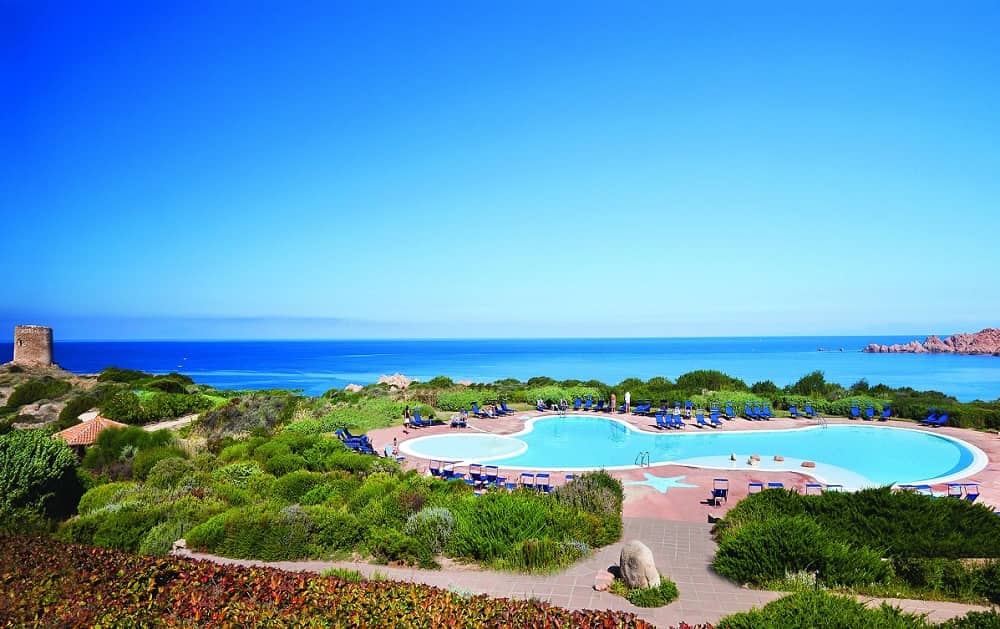
Isola Rossa is home to the Hotel Relax Torreruja Thalasso & Spa. This elegant and refined 4-star Superior is a romantic getaway, perfect for couples seeking absolute privacy. The village's shops and promenade are just a stone's throw away, while Isola Rossa's marina is an ideal base from which to discover the most fascinating places along this stretch of coastline, the unspoilt jewels of the La Maddalena Archipelago and southern Corsica, as well as the characteristic Bonifacio, thanks to a fleet of Delphina-owned boats. Equally strategic is its location in northern Sardinia, about an hour's drive from Olbia and Alghero and about 40 minutes from the ports of S. Teresa Gallura and Porto Torres.
The Costa Rossa: the fascination of history and legends
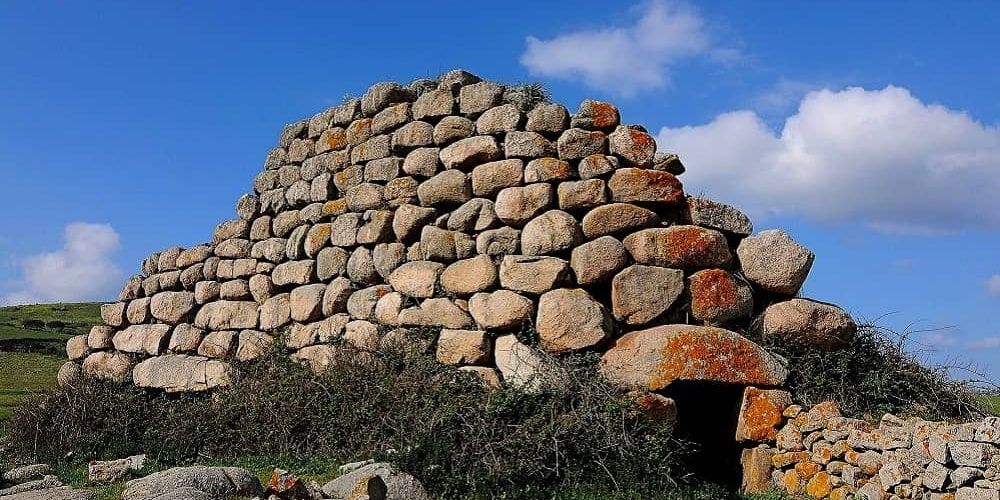
On an island as ancient as Sardinia, the Costa Rossa and its surroundings offer another kind of beauty besides nature. We are talking about the evidence of its history and the echoes of its legends.
Halfway between Trinità D'Agultu and Isola Rossa, in the hamlet of Paduledda, is the Nuraghe Bastianazzu, which stands near the sea on top of a hill and, further inland, the Nuraghe Izzana, probably the largest and one of the best preserved in Gallura. Nuraghi are ancient constructions thousands of years old, traces of the Sardinian civilisation of the past, and have a truncated cone shape made of stone boulders resting on each other. Austere and solitary, there are an estimated 7000 in Sardinia and it is not uncommon to see them, more or less preserved, in the island's countryside. Their function is still unclear to scholars, but it is believed that it was different depending on where they were built: military or defence, religious or astronomical observatory.
Domus de Janas (Fairies' Houses) are another vestige of the past in the Sardinian territory. They are hypogeic tombs dug into the rock belonging to the pre-Nuragic civilisation that reproduced the home of the living on a "reduced scale". The subject of numerous legends, it is said that the Janas who lived there were tiny, luminous and beautiful creatures, a bit like witches and a bit like fairies, capable of digging into the rock with their nails. Near Isola Rossa is the Conca di Li Fati tomb.
Popular and gastronomic traditions
An essential aspect that characterises the culture of a place is its flavours. Regarding food and wine, the area is rich in vineyards that produce Vermentino wine. Zuppa Gallurese, a poor recipe made with bread, pecorino cheese and sheep's broth, should undoubtedly be mentioned among the typical dishes.
In the hills, where you can breathe in the scent of myrtle, lies the municipality of Trinità D'Agultu e Vignola, closely linked to the traditions of its territory. 'Primavera in Gallura' (Spring in Gallura) is an event that aims to rediscover traces and evidence of the past and typical traditions of Gallura's rural civilisation, involving many villages. It is a unique opportunity to relive rituals such as 'La Pricunta' and 'Lu Coiu', i.e. the ancient wedding customs. Primavera in Gallura is just one of the many events you can discover by consulting the calendar of Salude & Trigu, the Sassari Chamber of Commerce project created to highlight all the most beautiful events in Northern Sardinia.
You can never understand the beauty of Sardinia from a photo. Listen to the ancient stories that populate it, experience its traditions in popular festivals and discover its magical world that still constitutes its true identity. Smell its odours, the scent of salt in the air and that of the Mediterranean maquis, myrtle and juniper berries, and feel the sun warming the earth. Sardinia is all this and something else that one cannot describe: you'll discover it when you take a deep breath and realise that this island is different from any other place in the world.
About the author
Written on 29/06/2021

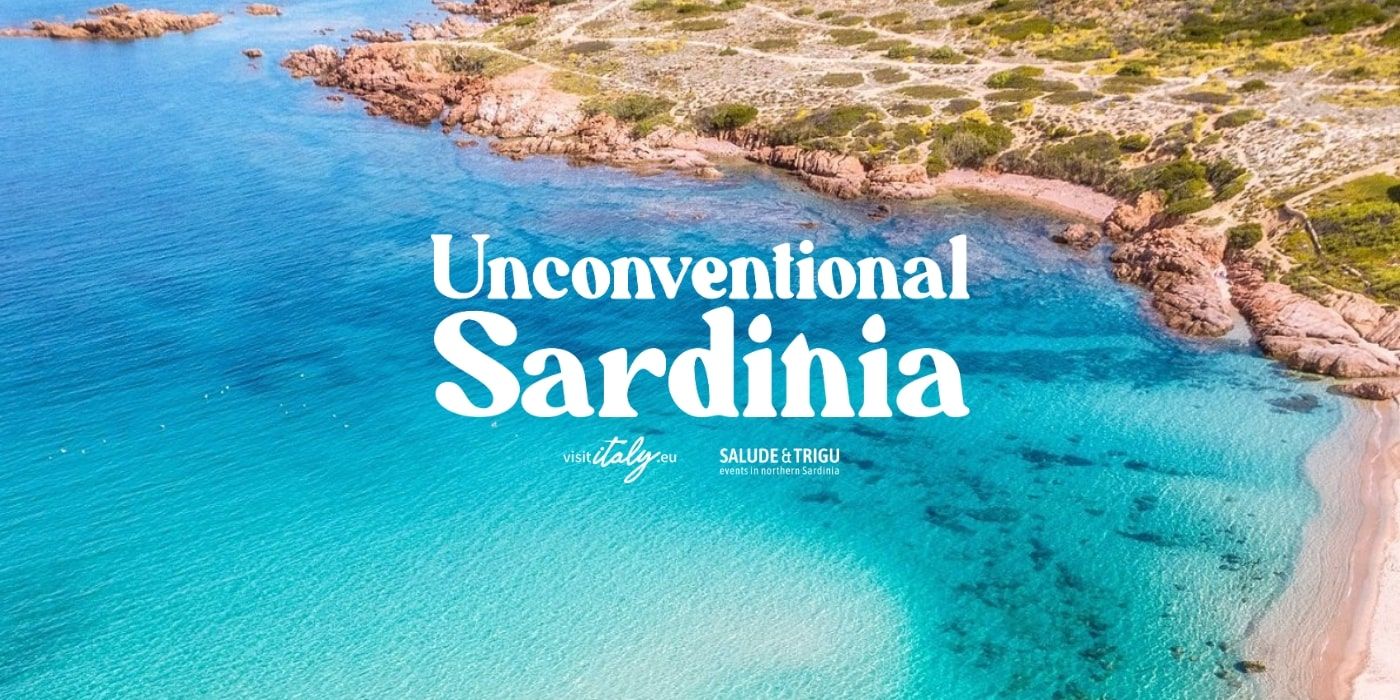

Chiara Musino
Costa Rossa: discover the breathtaking charm of an area in northern Sardinia that enchants with its wild nature and red granite cliffs